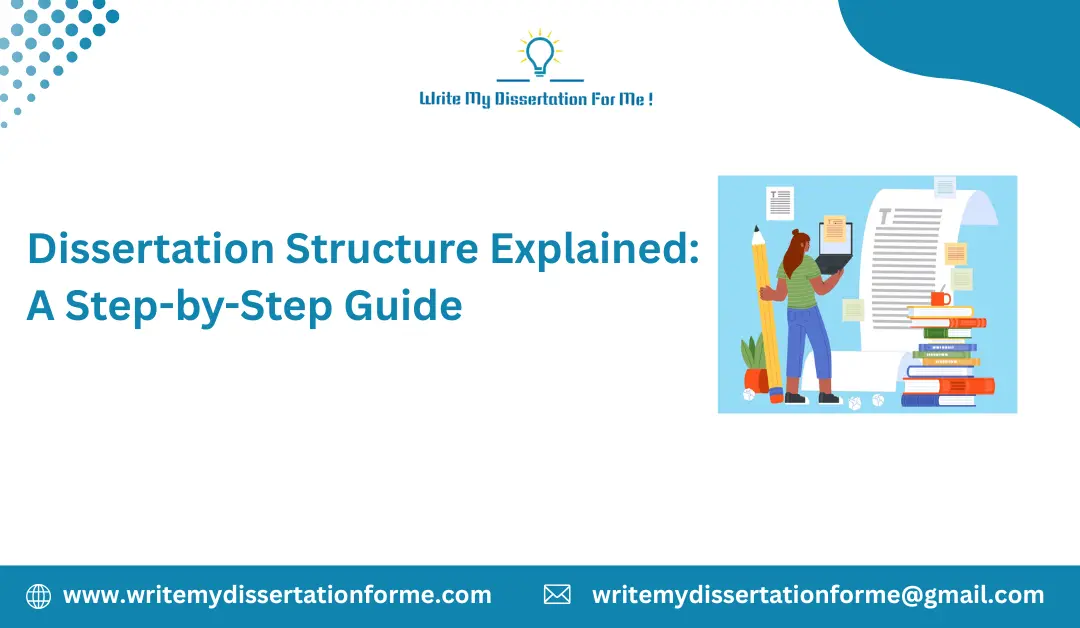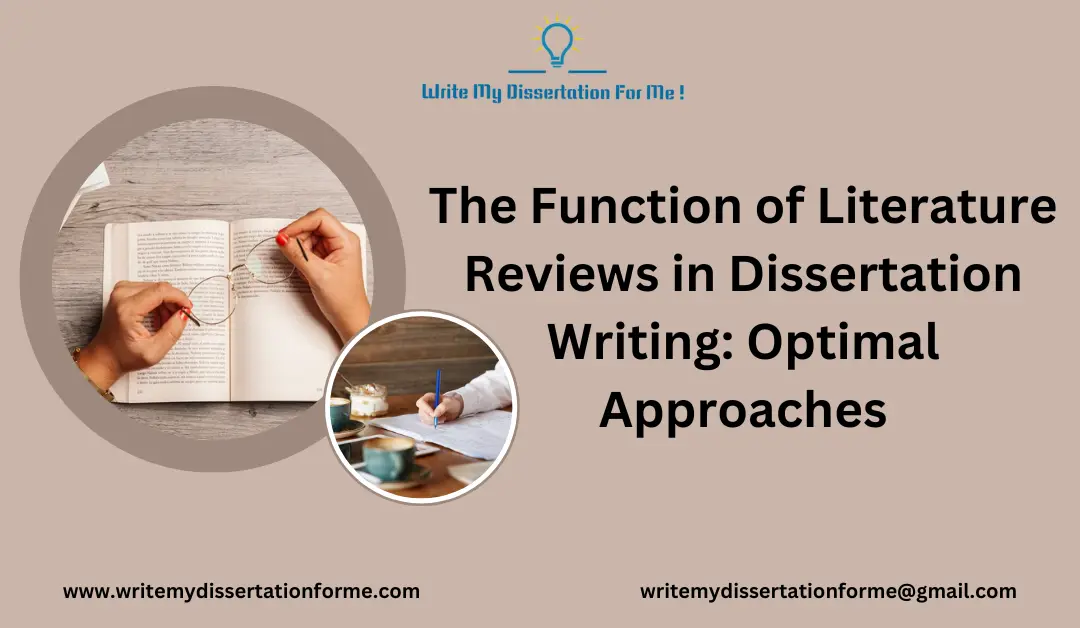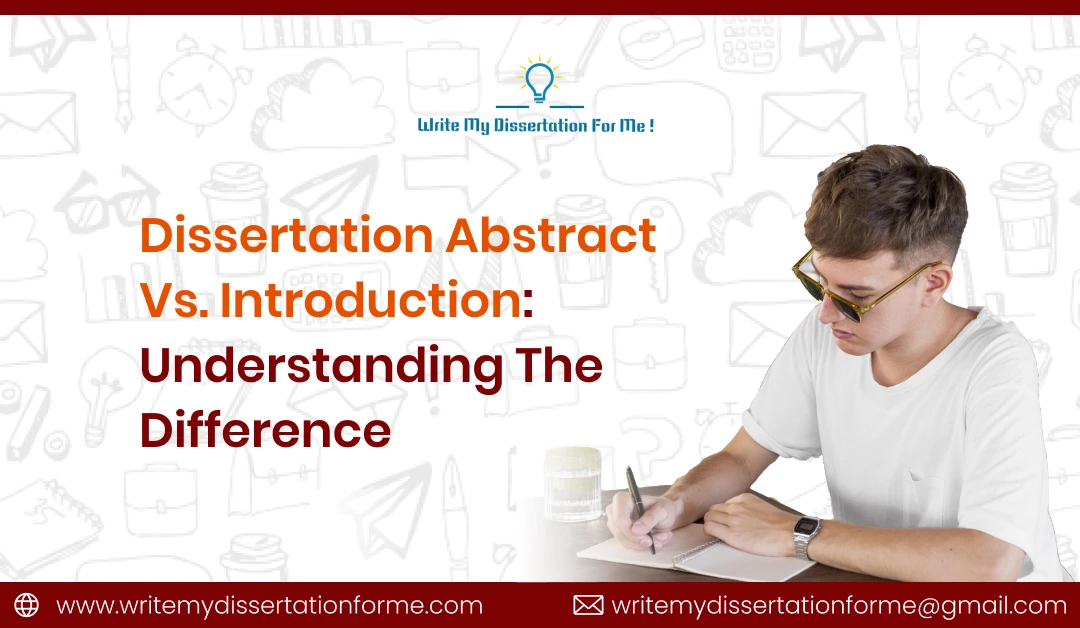Dissertation Structure Explained: A Step-by-Step Guide
September 10 2025 | 04 min read

Writing a dissertation feels huge — because it is. But break it down into its parts, and a big project becomes a sequence of manageable steps. This guide walks you through a typical dissertation structure (what goes where), what to include in each section, and practical tips to keep your writing focused and submission-ready.
Quick overview: the standard order:
Most dissertations follow this sequence (some programmes will tweak names or order slightly):
- Title page
- Abstract
- Acknowledgements (optional)
- Table of contents (plus list of figures/tables)
- Introduction
- Literature review
- Methodology
- Results / Findings
- Discussion
- Conclusion (and recommendations)
- References / Bibliography
- Appendices
Treat this as a flexible template — always check your university’s handbook for exact formatting, word limits and chapter names.
1. Title page:
What it is: the formal cover of your work.
Include: dissertation title, your name, degree programme, supervisor’s name, institution, department, submission date, student ID (if required).
Tip: follow the university template exactly — tiny formatting errors here can cost marks or require resubmission.
2. Abstract (150–350 words):
What it is: a concise summary of the whole project.
Include: research question/objective, methods, main results, key conclusion/implication.
Tip: write the abstract last (you’ll know what the “whole project” looks like then).
3. Acknowledgements (optional):
What it is: short thanks to supervisors, participants, funders, and family.
Tip: Keep personal tone professional and brief.
4. Table of contents & lists:
What it is: navigation for the reader — list chapters, subheadings, figures, tables, and appendices with page numbers.
Tip: generate the TOC automatically from heading styles so it updates as you edit.
5. Introduction:
Purpose: set the scene and tell readers what you’re doing and why.
Include:
- Broad context and relevance
- Narrowed research problem or gap in the literature
- Clear research question(s) or hypotheses
- Aims and objectives
- Scope/limitations and brief chapter map (what each chapter does)
Tip: make your research question(s) crystal clear — everything that follows should link back to them.
6. Literature review:
Purpose: show you understand the field and position your study within it.
Include:
- Thematic or chronological review of key sources
- Critical evaluation (strengths, weaknesses, debates, gaps)
- Theoretical framework or models you’ll use
- How your study fills the identified gap
Tip: be analytical not descriptive — synthesise sources and build an argument that justifies your research.
7. Methodology:
Purpose: explain how you conducted your research and why those choices are valid.
Include:
- Research design (qualitative, quantitative, mixed methods)
- Data sources (primary, secondary) and collection methods (surveys, interviews, experiments, archives, datasets)
- Sampling strategy and sample size (if applicable)
- Data analysis methods (statistical tests, thematic coding, models)
- Ethical considerations and approvals
- Limitations of the chosen approach
Tip: Justify your choices. Examiners want to know why you used a method, not just what you did.
8. Results / Findings:
Purpose: present the evidence you collected — clearly and objectively.
Include:
- Tables, charts, and figures (with clear titles and references in the text)
- Key quantitative outcomes or qualitative themes
- Only present results here — leave interpretation for the Discussion chapter.
Tip: visualisations should clarify, not clutter. Label axes, include sample sizes, and point readers to the key takeaway.
9. Discussion:
Purpose: interpret your findings and link them back to literature and theory.
Include:
- Explanation of what the results mean in relation to your research question(s)
- Comparison with existing studies and theories (confirmations, contradictions, extensions)
- Theoretical and practical implications
- Reflection on unexpected findings and plausible reasons
Tip: use subheadings aligned to your research questions to keep the discussion organised.
10. Conclusion (and recommendations):
Purpose: wrap everything up and state the main contribution.
Include:
- Brief recap of the research aim and the most important findings
- Clear statement of your thesis/contribution to knowledge
- Practical recommendations (policy, practice, further research)
- Final reflective comment (limitations and future directions)
Tip: keep this concise and powerful — don’t introduce new data here.
11. References / Bibliography:
What it is: full citations of every source you cited.
Tip: Use reference management software (e.g., Zotero, Mendeley, EndNote) and adhere strictly to the required citation style (e.g., APA, Chicago, Harvard, MLA).
12. Appendices:
What it is: supplementary material that is useful but not essential in the main text (raw data, questionnaires, interview guides, extended tables, ethical approval documents).
Tip: refer to appendices from the main text (e.g., “see Appendix A for the questionnaire”).
Practical layout & word-allocation guidance:
Word limits vary, but a common distribution for a 10,000–20,000-word master’s dissertation looks like:
- Introduction: 10%
- Literature review: 25–30%
- Methodology: 10–15%
- Results: 15–20%
- Discussion: 20–25%
- Conclusion & recommendations: 5–10%
Adjust for PhD theses, which are longer and require deeper literature/theoretical chapters.
Common mistakes to avoid:
- Waiting to write everything at the end — draft early and iterate.
- Mixing findings and discussion — keep reporting and interpretation separate.
- Poor structure or lack of signposting — guide the reader.
- Weak justification of methods — explain why your choices are appropriate.
- Inconsistent referencing or sloppy formatting — small errors look unprofessional.
Workflow tips & timeline:
- Start with a brief proposal and chapter plan.
- Create a realistic timetable (e.g., literature review first, methodology next).
- Write in chunks — aim for drafts rather than perfect first versions.
- Regularly meet your supervisor and act on feedback.
- Reserve 2–4 weeks for final edits, formatting, and proofing.
Final thoughts:
A dissertation is a research argument presented in a well-structured form. Each chapter has a clear role within that argument. If you plan your structure, justify your methodological choices, and write with clarity, the dissertation stops being an intimidating monster and becomes a sequence of logical steps toward a meaningful contribution.
If you loved reading this, please share this,
also read

The Function of Literature Reviews in Dissertation Writing: Optimal Approaches
The literature review is a crucial component of a strong dissertation in the context of academic writing. It is the framework...

Dissertation Abstract vs Introduction: Understanding the Difference
The dissertation procedure can be difficult, especially when attempting to distinguish between various components, such as th...

Write My Dissertation Methodology For Me
In many students' academic careers, starting the process of writing a dissertation represents a major turning point. It is a ...